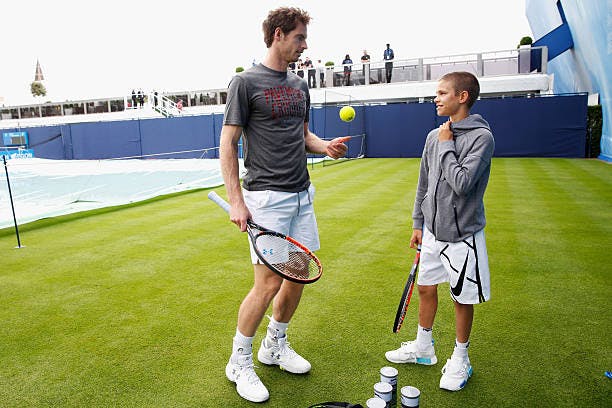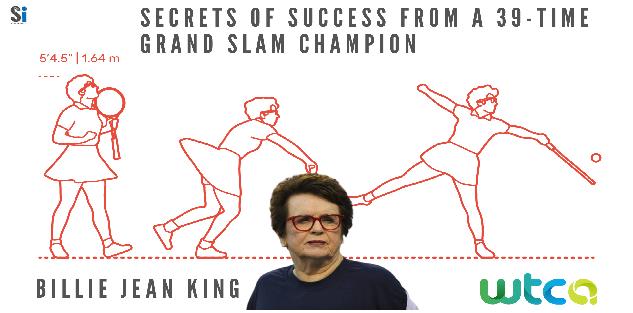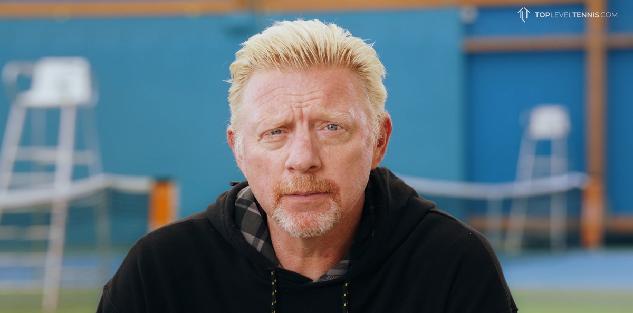Featured courses
- Four Tips to Turn Your Tennis Forehand Into a Weapon by Grant Young
- Tennis Legend Billie Jean King’s 4 Responsibilities as a Player by Grant Young
- Two Top Priorities For Success in Doubles Tennis by Grant Young
- Three of Tennis Whiz Lisa Dodson’s Tips to Improve Serves by Grant Young
- Three Elite Tennis Ball Machine Drills by Grant Young
- Three Keys For Correcting Tennis Serving Mechanics by Grant Young
- Five Tactical Tips to Win More Tennis Matches by Grant Young
- 4 Lessons Patrick Mouratoglou Learned From Coaching Serena Williams by Grant Young
- Four Effective Backhand Tennis Drills by Grant Young
- Two of Legendary Tennis Coach Paul Annacone’s Crucial Player Development Tips by Grant Young
- A Step-By-Step Guide To Mastering The Serve by Krsto Arsenijevic
- How to Dominate the Clay Court in Tennis by Krsto Arsenijevic
- 10 Essential Tennis Drills Every Coach Should Know by Brandon Ogle
- 8 Pre-Game Exercises to Prime Your Tennis Team for Competition by Neil Brown
- 7 Proven Tips To Develop Your Net Game in Tennis by Krsto Arsenijevic
- 10 Essential Tennis Drills Every Coach Should Know by Krsto Arsenijevic
- Developing Players - Two-handed backhand by Ramon Osa
- 6 Simple Warm-up Exercises For Tennis Players by Krsto Arsenijevic
- How to Beat a Serve-and-Volley Player by Krsto Arsenijevic
- How To Build Your Kinetic Chain Like Djokovic by Aiden Lefebvre
- How to neutralize a lefty in Tennis by Aiden Lefebvre
- 5 Tips To Improve Your Tennis Game Today by Krsto Arsenijevic
- Everything You Need to Know Before Buying New Tennis Shoes by Brandon Ogle
- Amp up your tennis practice with situational play by Neil Brown
- Tennis Equipment List by Brandon Ogle
- How to Master The One-handed Backhand in Tennis by Krsto Arsenijevic
- Modern High School Tennis Coaching Obstacles by Neil Brown
- Increase Your Tennis Fitness Level With 3 Easy Drills by Krsto Arsenijevic
- How to Successfully Hit a Two-Handed Backhand by Brandon Ogle
- How to Become a Grass Court Specialist in Tennis by Brandon Ogle
- How to Dominate the Hard-Court like Serena Williams by Brandon Ogle
- Hit a Drop Shot to Keep Your Opponent Off-Balance by Brandon Ogle
- New Tennis Injury Findings Linked to Neutral & Closed Stances by Oscar Wegner
- CHATTING WITH TENNIS PRO BRUCE CONNORS by Brandon
- How to Become a Mentally Strong Tennis Player by Brandon Ogle
- How to Win the Game of Angles by Hitting Cross-Court Shots by Eric Mahnke

8 Pre-Game Exercises to Prime Your Tennis Team for Competition
- By Neil Brown
As with just about any sport, preparing players for physical activity is vital. Not only do these pre-game exercises help a player maximize their performance, but they can also serve as a great way to prevent injuries. This is especially important within the sport of tennis, as it requires a steady amount of endurance. This difficult nature can be summed up in a quote from the great Billie Jean King: “Tennis is a perfect combination of violent action taking place in an atmosphere of total tranquility.”
Exercise #1: Light Joggingging
First off, it is important to get your quads and hamstrings loose. This step will include various forms of plyometrics. Some of these may include butt-kicks, carioca steps, wedels, baby bounds, angle slides, and sprints. Many of these exercises are universal and utilized by athletes from different sports. Personally, I have used them in basketball, football, and cross country. They help not only in loosening up but also to maximize explosiveness on the court.
Exercise #2: Stretchinghing
If stretching is not done correctly, injuries can occur quickly. Particularly, the stretching should focus on working out the lower back. Optimum Tennis says it is best to start with touching “your toes straight forward, then spread your legs and try to touch the left toe with your right hand and your right toe with your left hand". I’m sure you have picked up on some stretching exercises as well, so whatever exercises you know of should be successful as long as they account for the lower back in one way or another.
Exercise #3: Light Hittingting
After your players are loosened up, let them begin hitting and doing light volleys. Whether it is groundstrokes or volleys, this hitting should prepare the player for competition in terms of reflexes. At first, you should start out closer to the net before moving farther out in increments. At this stage, it is also important to place the focus more so on the technical aspects of the strokes rather than the actual result. Make sure the form is correct.
Exercise #4: Practice Servingving
For this particular exercise, you have some leeway in terms of the amount of time spent here. Occasionally, it takes a little longer to get your serve on point. However, for all players, it is important to get at least 5 minutes of warm-up serves in while serving on both sides of the court. Have the players practice serving both near-court and far-court. Possessing this skill in one’s repertoire will make young players more interested in perfecting their serve and keeping the opposition on the ropes.
Exercise #5: Mental PrepPrep
In nearly every sport, it is critical to be mentally focused on the competition ahead. Countless times, I have seen players goofing around in warm-ups and this mindset can be immediately spotted once the game begins. If you’re not mentally prepared, it is easy to see a more talented player fall in defeat. Therefore, at this stage, it is important to keep your players focused on their upcoming matches. During these warm-up exercises above, you can utilize this time to get their head in the game by maintaining focus and taking a professional approach to the warm-up routine.
Exercise #6: Personalized Approachoach
Each of the five exercises listed above can easily be done in succession as a warm-up routine. However, it’s also your job as a coach to know your individual players and tailor the warm-up to fit their qualities. As a result, I have included this exercise to make unique warm-ups depending on injuries or recent form. iSport states “Always adjust your pre-match routine to fit your personal needs. If you have a bad shoulder, take extra time to stretch it and spend less time focusing on something else. Your warm-up should tailor to your needs, so never feel obligated to a specific routing.” The main thing I can recommend is to work towards your upcoming match. If it’s on a grass court, practice shots that will suit a quicker play. Whereas, if you’re preparing for a clay court match, work on slices that will be more effective in longer rallies.
Exercise #7: Become Students of the GameGame
To keep your players enthused in the upcoming matches, have them do research on their upcoming opponent. Oftentimes, during the hitting stage of warm-ups, you can do this with your opponent to analyze their game. Are they dominant backhand or forehand players? Does he or she rush the net on a frequent basis or possess a powerful serve? These questions can help you understand what type of player you are going up against and how to adjust your playing style to take advantage of their weaknesses.
Exercise #8: Cool Down After Warm-Upm-Up
After completing the exercises above, you should have your players cool down for at least 5 minutes and get some more fluids in them. This will not only allow you to maximize the effectiveness of the warm-up, but it can serve as a relaxer. When I play, this helps me calm down a little bit directly after getting some serves and returns in. It will put the finishing touches on perfecting the mind and body for the match ahead. Possibly the greatest women’s tennis player of all time, Serena Williams said “If you keep playing tennis when somebody is shooting a gun down the street, that’s concentration.” In tennis, the mental aspect can be just as important as the physical nature.
Youth Tennisnnis
Coaching a youth tennis team can be difficult, as you want your players mentally and physically prepared while making it a fun event. The exercises above can be completed to perform both of these tasks at the same time to build team comradery. As a coach, you should use your expertise to adjust your drills and goals to fit your team’s skill set, age, and competition level – all while making sure they are prepared to prevent injuries.



